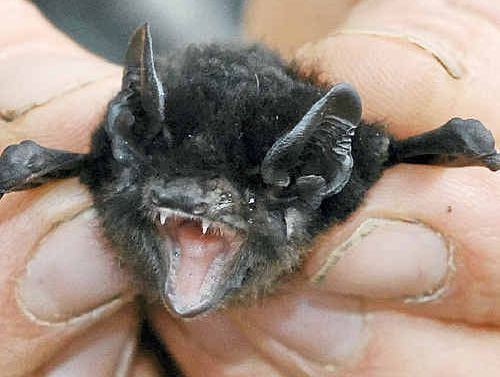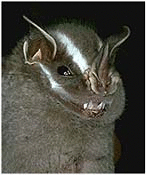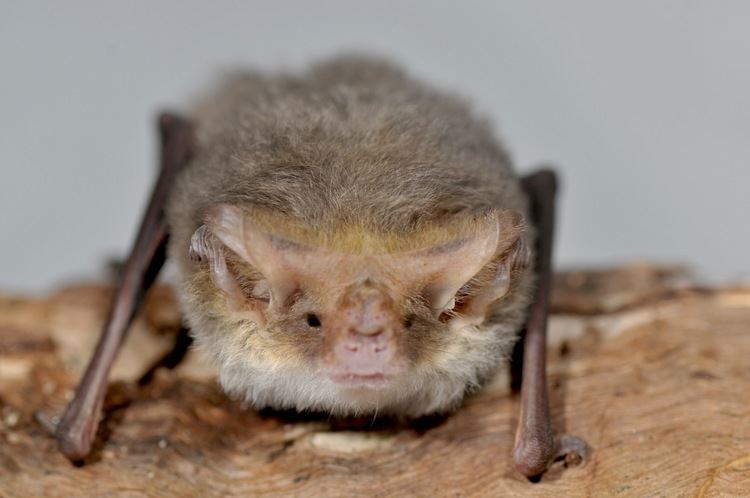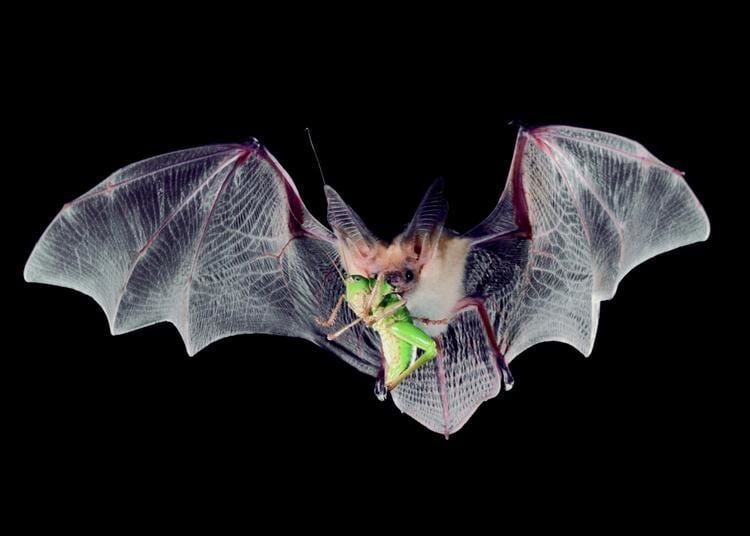Kingdom Animalia Order Chiroptera Higher classification Bat | Phylum Chordata Scientific name Microchiroptera | |
 | ||
Suborder MicrochiropteraDobson, 1875 Mass Lesser horseshoe bat: 5 – 9 g Wingspan Lesser horseshoe bat: 19 – 25 cm, Mediterranean horseshoe bat: 30 – 32 cm Length Lesser horseshoe bat: 3.5 – 4.5 cm, Mediterranean horseshoe bat: 4.3 – 5.8 cm, Cape horseshoe bat: 5.8 – 6.2 cm Tail length Mediterranean horseshoe bat: 2.2 – 3 cm, Cape horseshoe bat: 2.4 – 3.2 cm Lower classifications Mouse‑eared bat, Vampire bat, Vesper bat, Pipistrellus, Horseshoe bat | ||
Microbat rescue
The microbats constitute the now outdated suborder Microchiroptera within the order Chiroptera (bats). Bats were once differentiated into Megachiroptera and Microchiroptera, based on their size; but available molecular evidence has now shown this to be incorrect, the horseshoe bats being included in Yinpterochiroptera with the fruit bats and others. Most species which were termed Microchiroptera are now referred to as the Yangochiroptera.
Contents
Definition
The distinctions between microbats and megabats are:

Characteristics
Microbats are 4 to 16 cm long.

Most microbats feed on insects. Some of the larger species hunt birds, lizards, frogs, smaller bats or even fish.

The only three species of microbat that feed on the blood of large mammals or birds ("vampire bats") live in South and Central America.

The term "leaf-nose" does not indicate the diet preferred by particular species and is applied to a wide variety of microbats. Most leaf-nosed microbat species are fruit and nectar-eating. However, three species follow the bloom of columnar cacti in northwest Mexico and the Southwest United States northward in the northern spring and then the blooming agaves southward in the northern fall (autumn). Other leaf-nosed bats, such as Vampyrum spectrum of South America, hunt a variety of prey such as lizards and birds. The horseshoe bats of Europe and California leaf-nosed bat have an incredibly intricate leaf-nose for echolocation and feed primarily on insects.
Echolocation

Microbats generate ultrasound via the larynx and emit the sound through the nose or the open mouth. Microbat calls range in frequency from 14,000 to over 100,000 hertz, well beyond the range of the human ear (typical human hearing range is considered to be from 20 to 20,000 Hz). The emitted vocalizations form a broad beam of sound used to probe the environment, as well as communicate with other bats.

Some moths have developed a protection against bats. They are able to hear bats' ultrasounds and flee as soon as they notice these sounds, or stop beating their wings for some time to deprive the bats of the characteristic echo signature of moving wings on which they may home in. To counteract this, the bats may cease producing the ultrasound bursts as they near prey, and thus avoid detection.
Classification

While bats have been traditionally divided into megabats and microbats, recent molecular evidence has shown the superfamily Rhinolophoidea to be more genetically related to megabats than to microbats, indicating the microbats are paraphyletic. To resolve the paraphyly of microbats, the Chiroptera were redivided into suborders Yangochiroptera (which includes Nycteridae, vespertilionoids, noctilionoids, and emballonuroids) and Yinpterochiroptera, which includes megabats, rhinopomatids, Rhinolophidae, and Megadermatidae.
This is the classification according to Simmons and Geisler (1998):
Superfamily Emballonuroidea
Superfamily Rhinopomatoidea
Superfamily Rhinolophoidea
Superfamily Vespertilionoidea
Superfamily Molossoidea
Superfamily Nataloidea
Superfamily Noctilionoidea
